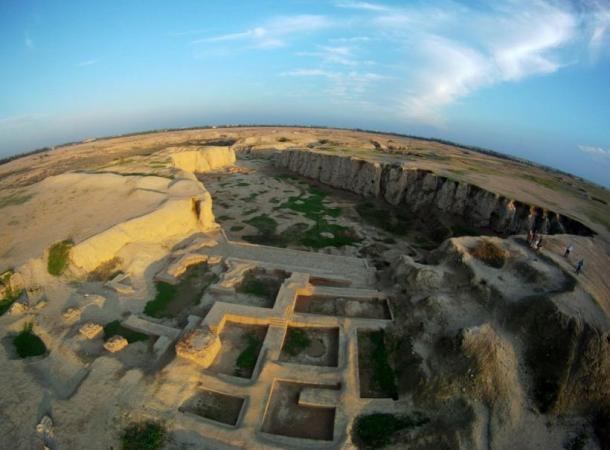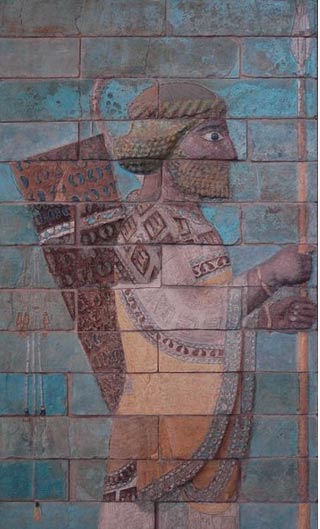
The ancient city of Susa in Iran is a worldwide treasure
The Biblical city of Shushan, now the modern Iranian city of Shush, has been added to the United Nations Educational, Scientific and Cultural Organisation (UNESCO) World Heritage List along with six other locations, including the troglodyte settlements of Maymand and the Botanical Gardens of Singapore. The Great Burkhan Khaldun Mountain sacred landscape in Mongolia has also been added to the list along with vineyards in Burgundy and the village of Hautvilliers where a monk by the name of Dom Perignon invented the fermentation process that made champagne fizzy. As a result of the Burgundy listing, France how has 41 listed World Heritage sites.

The remains of a spectacular sculpture in Susa, Iran (UNESCO)
Shushan is located in the Lower Zagros Mountains, around 250 kilometres (160 miles) east of the Tigris river and between the Kharkeh and Dez rivers. The ancient city was also known as Susa, the name Shushan deriving from the Persian word Shush, the Hebrew variant of which is Shushān. The name may derive from Shushana, a variety of water lily that was said to grow in lakes and swamps nearby. The city formerly belonged to the Elamite, Pesian and Parthian empires and was known to be a centre for the worship of Inanna, the Sumerian goddess of love, fertility and warfare. It was once the winter residence of Persian kings after having been captured by Cyrus the Great. A number of excavations of the city have revealed evidence of occupation going back to 4200 BC. Artifacts discovered at the site include carved cylinder seals, jewellery, clay balls and clay tablets with cuneiform inscriptions recording business transactions, political history and mathematical calculations.

Ancient ruins of Susa, Iran (UNESCO)
In the Bible, the city is known primarily from the story of Esther in which Haman the Agagite planned to annihilate the Jews of Persia. According to the story, Esther outwitted him by persuading her husband, King Ahasuerus of Persia, to sabotage Haman’s plan. The episode is commemorated every year in the Jewish Purim festival which is marked with costumed parties and other celebrations. The city is also mentioned in Nehemiah and Daniel, both of whom lived in the city during the 6 th century BC in the period known as the Babylonian captivity when a number of Jews were held captive following the siege of Jerusalem by Nebuchadnezzar. A tomb known as Shush-Daniel is believed to be that of Daniel himself. It is capped by an unusual white cone which some believe was formerly a stone ‘Star of David’.

Queen Esther by Edwin Long, 1878 (Wikimedia Commons)
The city was also associated with Daniel’s vision of a ram and a goat in the third year of Belshazzar. According to the book of Esther, Shushan once had a magnificent palace which included a great hall formed from magnificent columns and a highly impressive frontage. According to inscriptions discovered in the ruins, the palace was built by the Persian kings Darius and Artaxerxes. Panels of coloured glazed bricks can still be seen in the ruins today and a number of sources list cedar from Lebanon, teak from Gandara and gold from Sardis and Bactria.

Glazed siliceous bricks at Susa, c. 510 BC depicting an Achaemenid soldier (Wikimedia Commons)
Alexander the Great initiated Shushan’s decline by favouring Babylon and shortly after, following a revolt, the city was burnt to the ground. Subsequently rebuilt by Sapor II (309-379 AD), it was renamed Iranshahr Shapur and later helped in the resistance against the Arab invasion of 645.
UNESCO is based in Paris. Its World Heritage Committee, meeting in Bonn recently, has also recently added the Alamo battlefield in Texas to the list. Another, more controversial addition, was Battlefield Island, off the coast of Nagasaki in Japan. This was used by the Japanese during World War 2 to house Korean prisoners used as forced labour. The dispute between the two countries over the listing was only finally resolved when it was agreed to list the site as an industrial site.
Featured image: Ancient ruins in Susa, Iran (UNESCO)
















Comments
In Iran ancient people believed Zoroastrian and god of Ahura Mazda .they were no other religious believes and Jews creation was just 300 years ago.